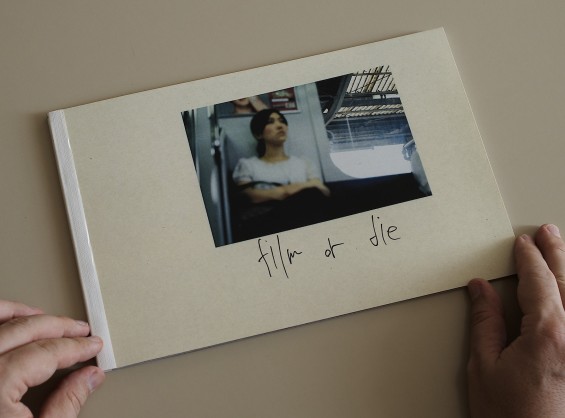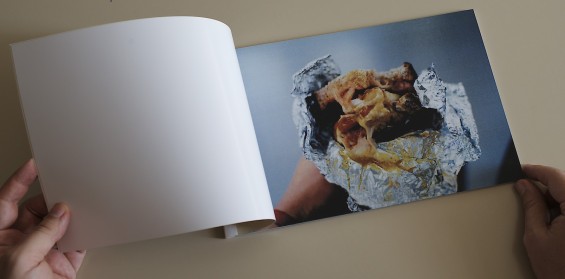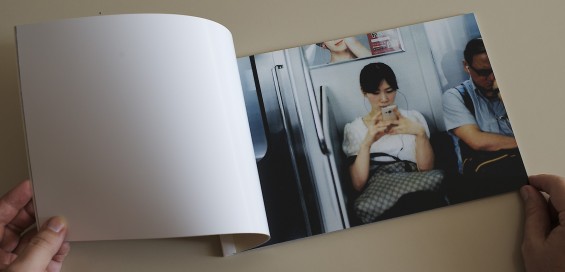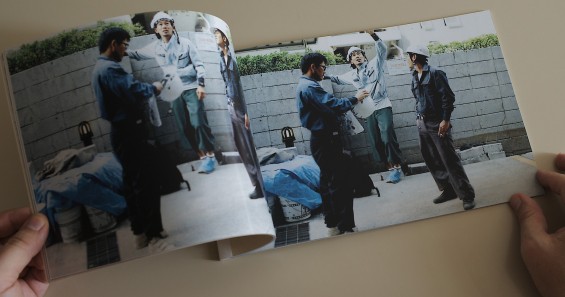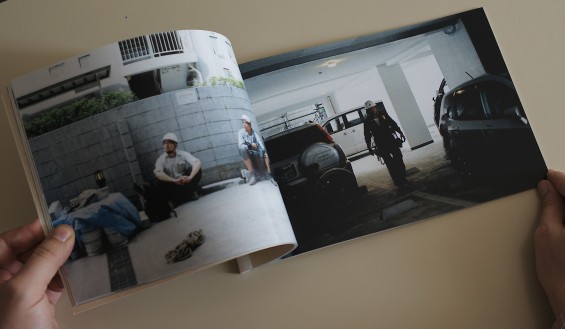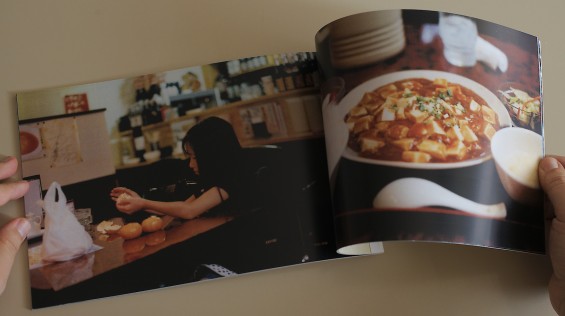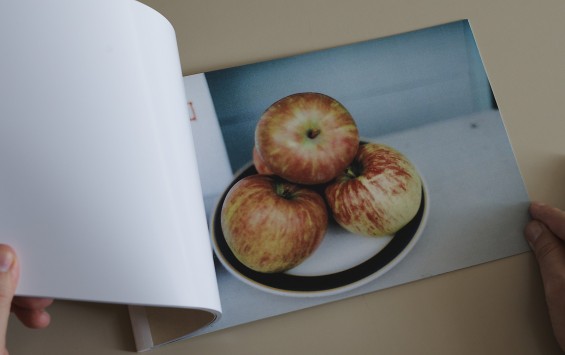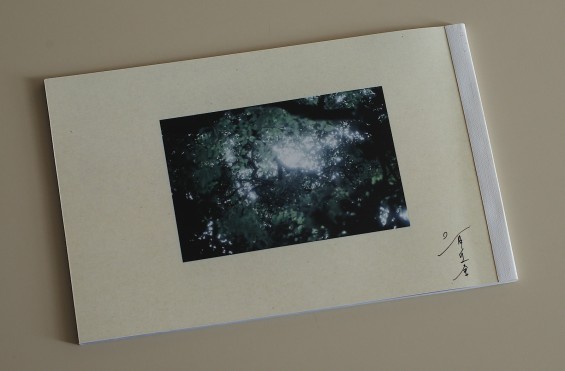Ikuro Suzuki, Film or die, self-published, Japan, 2015
Ikuro Suzuki photographs his life. That is, of course, a well trodden path in photography. What makes his work interesting is his process: he photographs with film, and as soon as he finishes a roll he develops it and makes a book, using all the exposures in the film.
In the usual workflow a photographer would finish the roll, develop it, print a contact sheet, search the contact sheet for promising images, make work-prints, edit, etcetera. It all starts with life but, after all that work, how much of life is left?
Ikuro Suzuki does away with editing, with searching for or imposing a meaning after the fact. He edits in camera, and uses one of the most overlooked characteristics of film, its physical continuity. You eat a sandwich, take the subway, go to work, life goes on in succession, and as it is being photographed the continuity of it all is registered on the surface of the film. Suzuki’s book is true to that record publishing everything. In the end it is a more transparent photography.
There is another peculiarity to Ikuro Suzuki’s work: his books are published in tiny editions of between one and six copies. Although he received the 2013 New Cosmos of Photography Grand Prize, it’s no wonder his work is not well known. But that is about to change. Starting this month, and for a year, he will publish his books monthly with the well-known Japanese publisher AKAAKA. We wish him the best of luck.

